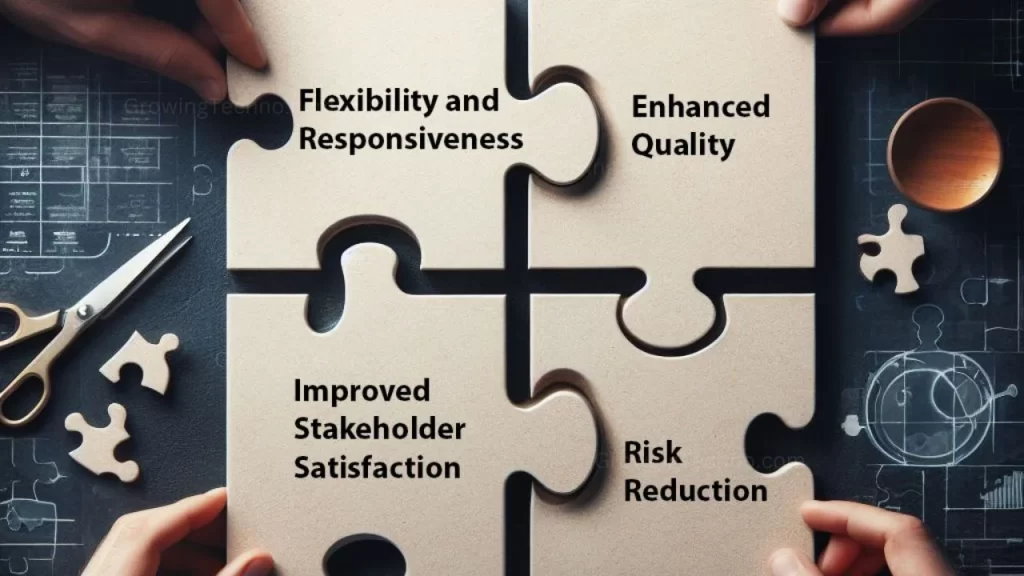
In the fast-paced realm of software development, change is the only constant. To thrive in this ever-evolving landscape, software teams are turning to Adaptive Software Development (ASD). This approach provides a flexible framework for tackling projects, embracing change, and delivering exceptional software solutions.
Understanding Adaptive Software Development (ASD)
ASD is like a chameleon of the software world. It adapts and responds to shifts in requirements, technology, and customer needs. Unlike traditional rigid methodologies, ASD acknowledges that uncertainty and change are inevitable. It encourages collaboration, feedback, and a focus on individuals and interactions over processes and tools.
Let’s dive deeper into the core principles, benefits, and key practices that make ASD a valuable addition to the software development toolkit.
The Core Principles of Adaptive Software Development
- Collaboration Over Contracts: ASD promotes open communication among team members and stakeholders. Instead of rigid contracts, it prioritizes collaboration to deliver value to customers efficiently.
- Change Acceptance: ASD embraces change as a natural part of the development process. It’s not seen as a disruption but as an opportunity to enhance the final product.
- Customer Feedback: Frequent feedback from customers and end-users is crucial in ASD. This iterative approach ensures that software aligns with real-world needs.
- Small Teams: Smaller, self-organizing teams are at the heart of ASD. They have the autonomy to make decisions and adapt to changing circumstances quickly.
The Benefits of Adaptive Software Development
- Flexibility and Responsiveness: ASD shines in dynamic project environments where requirements evolve. It enables teams to adapt swiftly to changes, accommodating new insights and shifting priorities without causing delays. This flexibility keeps projects aligned with evolving goals and market demands.
- Enhanced Quality: Continuous feedback and iterative development cycles are at the core of ASD. These practices ensure that software undergoes thorough testing and validation at every stage. As a result, the end product is of higher quality, with fewer defects and issues. This commitment to quality saves time and resources in the long run.
- Improved Stakeholder Satisfaction: ASD prioritizes stakeholder involvement throughout the development journey. Regular interactions, reviews, and feedback sessions keep stakeholders informed and engaged. This collaborative approach ensures that the final product aligns with their expectations and requirements. The result is higher stakeholder satisfaction and increased confidence in the software’s success.
- Risk Reduction: Early and continuous testing and validation processes in ASD are proactive risk management strategies. They help identify potential issues and challenges in the early stages of development. By addressing these concerns promptly, ASD mitigates risks effectively. This proactive risk reduction contributes to project success and minimizes unexpected setbacks.

Key Practices in Adaptive Software Development
Certainly, let’s provide a more concise explanation of the key practices in Adaptive Software Development (ASD):
- Prototyping: Prototyping is fundamental in ASD. It involves creating simplified software versions to visualize concepts and gather feedback early in the project. It aligns teams and minimizes misalignments and changes later.
- Iterative Development: ASD uses short development cycles or iterations. After each cycle, feedback shapes software improvements. This approach enables early feature delivery, transparency, and efficient risk management.
- Continuous Testing: Continuous testing is integral to ASD, identifying and fixing issues throughout development. It maintains software quality and prevents late-stage rework, aligning with ASD’s adaptable nature.
- Collaborative Workspaces: Physical or virtual collaborative spaces encourage team communication and idea-sharing. They break down silos and promote cross-functional collaboration, fostering innovation and alignment.
In essence, these practices empower ASD teams to adapt to change, deliver value early, maintain quality, and collaborate effectively.
Applying ASD in Real Projects
Now, let’s explore how ASD works in real-world scenarios.
Scenario 1: Building an E-Commerce Website
Imagine a software team tasked with building an e-commerce website for a client. In a traditional approach, the team would follow a fixed project plan, specifying all features and designs upfront. However, in an adaptive context:
- The team starts with a basic website prototype, focusing on core functionality like product listings and a shopping cart.
- They regularly demo this prototype to the client, gathering feedback and making adjustments.
- As the project progresses, new features and improvements are added based on evolving customer needs and market trends.
Scenario 2: Developing a Mobile App
In another scenario, a team is developing a mobile app. In ASD:
- They begin with a minimal viable product (MVP) that includes only essential features.
- Users are encouraged to provide feedback on the MVP, helping the team identify usability issues and desired features.
- Through iterative cycles, the app evolves, incorporating user feedback and adapting to changes in mobile platforms.
Challenges and Considerations
While ASD offers numerous advantages, it’s not without challenges:
1. Communication:
In ASD, collaboration is key. Team members need to share insights, ideas, and progress openly. Stakeholders should be actively engaged in providing feedback and clarifying requirements. Customers must have a clear line of communication to voice their evolving needs and expectations.
However, maintaining such open lines of communication can be challenging. It requires the establishment of effective channels, regular meetings, and a culture of transparency. Miscommunication or lack of communication can lead to misunderstandings, missed opportunities for improvement, and, ultimately, project setbacks.
2. Skillset:
Team members must possess skills in rapid development, testing, and an innate ability to embrace change. This means they should be adept at quickly adjusting their focus, switching tasks, and accommodating new requirements or shifting priorities.
Adaptable individuals who thrive in an environment of uncertainty are well-suited to ASD. However, not all software professionals are naturally inclined towards this approach. Therefore, organizations embracing ASD may need to invest in training and skill development to ensure that their teams are well-prepared for the challenges it presents.
3. Scope Control:
To maintain control over scope, ASD teams must regularly reassess priorities and requirements. This involves continuous evaluation of what features or changes are most valuable to the customer and what can be deferred or discarded. It’s an ongoing balancing act that requires discipline and a clear understanding of project objectives.
Failure to manage scope effectively can lead to missed deadlines, budget overruns, and diminished quality. Therefore, ASD teams must strike a delicate balance between adaptability and scope control to ensure that projects stay on track and deliver value to stakeholders.
In Conclusion
Adaptive Software Development isn’t a one-size-fits-all solution, but it’s a powerful approach for projects where change is a constant. By embracing flexibility, collaboration, and a focus on customer value, software teams can navigate the dynamic world of software engineering with confidence, delivering solutions that truly meet the needs of their users and stakeholders.









